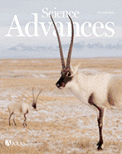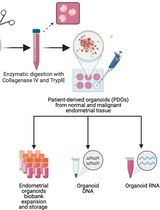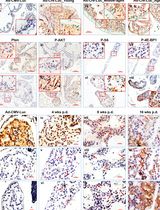- EN - English
- CN - 中文
Preparation of an Orthotopic, Syngeneic Model of Lung Adenocarcinoma and the Testing of the Antitumor Efficacy of Poly(2-oxazoline) Formulation of Chemo-and Immunotherapeutic Agents
肺腺癌原位同源模型的制备及聚恶唑啉化疗和免疫治疗药物抗肿瘤疗效的测定
发布: 2021年03月20日第11卷第6期 DOI: 10.21769/BioProtoc.3953 浏览次数: 6945
评审: Aleksei A Tikhonovxiang luoLiang Wang
Abstract
Tumor xenograft models developed by transplanting human tissues or cells into immune-deficient mice are widely used to study human cancer response to drug candidates. However, immune-deficient mice are unfit for investigating the effect of immunotherapeutic agents on the host immune response to cancer (Morgan, 2012). Here, we describe the preparation of an orthotopic, syngeneic model of lung adenocarcinoma (LUAD), a subtype of non-small cell lung cancer (NSCLC), to study the antitumor effect of chemo and immunotherapeutic agents in an immune-competent animal. The tumor model is developed by implanting 344SQ LUAD cells derived from the metastases of KrasG12D; p53R172HΔG genetically engineered mouse model into the left lung of a syngeneic host (Sv/129). The 344SQ LUAD model offers several advantages over other models: 1) The immune-competent host allows for the assessment of the biologic effects of immune-modulating agents; 2) The pathophysiological features of the human disease are preserved due to the orthotopic approach; 3) Predisposition of the tumor to metastasize facilitates the study of therapeutic effects on primary tumor as well as the metastases (Chen et al., 2014). Furthermore, we also describe a treatment strategy based on Poly(2-oxazoline) micelles that has been shown to be effective in this difficult-to-treat tumor model (Vinod et al., 2020b).
Keywords: Xenograft (异种移植)Background
NSCLC has a poor prognosis because most patients have advanced stage of cancer at the time of diagnosis, and patients with early-stage tumors are very likely to encounter post-surgical metastasis and recurrence (Zappa and Mousa, 2016; Renaud et al., 2016). Transplanted tumors grown subcutaneously in immune-deficient nude mice do not faithfully recapitulate the metastatic disease, and therefore, better models are needed (Manzotti et al., 1993). The 344SQ LUAD cell line forms spontaneous metastasis due to the suppression of the microRNA-200 (miR-200) expression, resulting in an epithelial-mesenchymal transition (EMT) phenotype having increased motility (Chen et al., 2014). Moreover, with a considerably low number of tumor-infiltrating cytotoxic T lymphocytes, the Kras/p53 mutant LUAD model exhibits an 'immunologically cold' phenotype. The low number of anticancer lymphocytes renders it less receptive to treatments like anti-PD1 that depends on pre-existing T cells, making it an ideal model to test alternative strategies for the treatment of “immunologically cold tumors” (Pfirschke et al., 2016; Espinosa et al., 2017).
Platinum-based chemotherapy is a standard of care in NSCLC. However, acquired resistance to platinum drugs presents a serious challenge in NSCLC management (Galluzzi et al., 2012). Here, we describe a procedure to adopt the Poly(2-oxazoline) (POx)-based nanomicelle formulation strategy for the coadministration of agents that reverse drug resistance (a.k.a. chemosensitizers) with platinum drugs and assess their efficacy in the LUAD model of NSCLC. Further, we describe an immunotherapeutic approach for treating LUAD by using POx micelle formulation of a small molecule biologic response modifier, Resiquimod (administered alone or in combination with checkpoint blockade therapy). POx micelle formulation of poorly soluble drugs has been previously demonstrated to be safe and effective in various tumor models (He et al., 2016). POx micelles are easy to prepare (Vinod et al., 2020a) and can be used to solubilize a broad range of poorly soluble compounds for drug delivery applications.
Materials and Reagents
Alcohol swab (B.D. Biosciences)
Nair hair removal cream
Cotton swab
Sterile gauze pads
Tuberculin syringe (B.D. Biosciences)
344SQ-green fluorescent protein/Firefly luciferase (GFP/fLuc) cells (source: J. Kurie, MD Anderson Cancer Center)
Hanks' Balanced Salt solution (Gibco)
Matrigel (Corning)
D-luciferin (PerkinElmer)
1× DPBS (Gibco)
Isofluorane (VetOne)
Ketamine (Vedco)
Xylazine (Acorn animal health)
Acepromazine (Vedco)
Anesthetic cocktail (see Recipes)
Note: Refer to Vinod et al. (2020a) (protocol based exclusively on Poly(2-oxazoline) preparation for reagents for Sections C and D.
Equipment
Surgical instruments
Autoclip Wound Closing System – Staples + Applier (Braintree Scientific, Inc)
Iris Surgical Scissors, 4½ inch, curved (Fisher Scientific)
Delicate Specialty Dissection Forceps, Serrated, 5" (Fisher Scientific)
IVIS-Lumina II optical imaging system (PerkinElmer Inc., Hopkinton, MA)
Small Animal induction chamber
Software
Living Image® software
Procedure
文章信息
版权信息
© 2021 The Authors; exclusive licensee Bio-protocol LLC.
如何引用
Readers should cite both the Bio-protocol article and the original research article where this protocol was used:
- Vinod, N., Hwang, D., Azam, S. H., Van Swearingen, A. E. D., Wayne, E., Fussell, S. C., Sokolsky-Papkov, M., Pecot, C. V. and Kabanov, A. V. (2021). Preparation of an Orthotopic, Syngeneic Model of Lung Adenocarcinoma and the Testing of the Antitumor Efficacy of Poly(2-oxazoline) Formulation of Chemo-and Immunotherapeutic Agents. Bio-protocol 11(6): e3953. DOI: 10.21769/BioProtoc.3953.
- Vinod, N., Hwang, D., Azam, S. H., Van Swearingen, A. E. D., Wayne, E., Fussell, S. C., Sokolsky-Papkov, M., Pecot, C. V. and Kabanov, A. V. (2020b). High-capacity poly(2-oxazoline) formulation of TLR 7/8 agonist extends survival in a chemo-insensitive, metastatic model of lung adenocarcinoma. Sci Adv 6(25): eaba5542.
分类
癌症生物学 > 通用技术 > 动物模型
您对这篇实验方法有问题吗?
在此处发布您的问题,我们将邀请本文作者来回答。同时,我们会将您的问题发布到Bio-protocol Exchange,以便寻求社区成员的帮助。
提问指南
+ 问题描述
写下详细的问题描述,包括所有有助于他人回答您问题的信息(例如实验过程、条件和相关图像等)。
Share
Bluesky
X
Copy link












